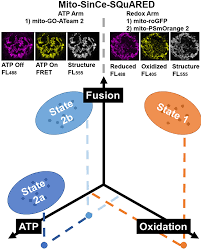 Balance of Mitochondrial Fission and Fusion
Balance of Mitochondrial Fission and Fusion
Other than playing a central role in energetics, mitochondria are also crucial for cellular redox balance, calcium homeostasis, lipid modification and regulation of cell death in various developmental contexts. Mitochondrial structure has been found to be dynamic particularly in various proliferating cells. They exist in different inter-convertible forms resulting from fission-fusion events between individual mitochondria, significance of which is far from clear. Currently, we are focused on understanding the significance of mitochondrial dynamism in cell proliferation and differentiation. A set of proteins that govern either fusion or fission of mitochondrial inner and outer membranes have been characterized and it is their activities that decide the steady state mitochondrial morphology in a cell; when fission dominates mitochondria remain as small fragmented elements and when fusion dominates mitochondria coalesced into larger hyperfused forms. In mitotic cells the key cell cycle regulators modulate mitochondrial morphology during progression through a mitotic cycle, which in turn modulates cell cycle. We use various kinds of biochemical, cell biological, microscopy and genetic tools to understand if the mitochondrial fission-fusion proteins can regulate cell proliferation, deregulation of which could initiate or maintain tumorigenic processes. We use our favorite model systems, mammalian cell lines and Drosophila, in a complementary fashion. Find snippets from some of our publications below.









